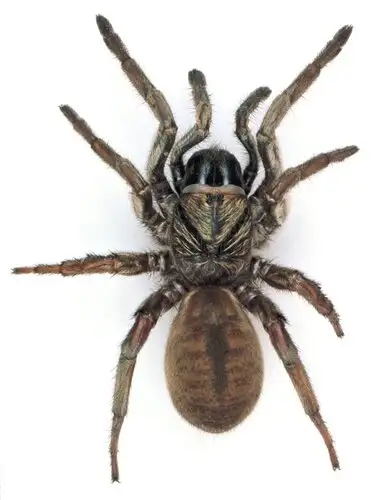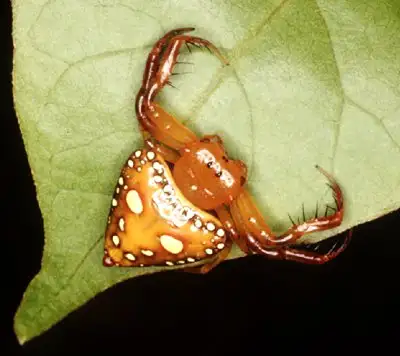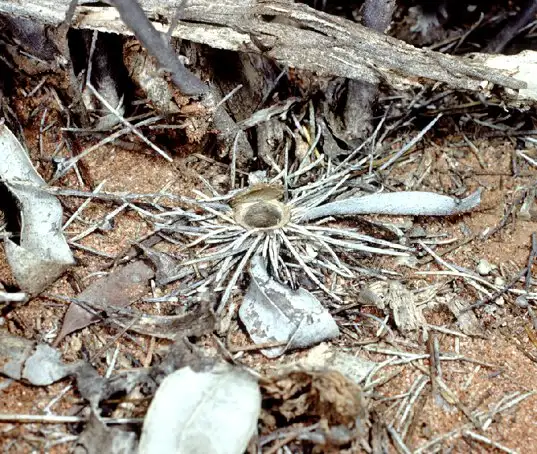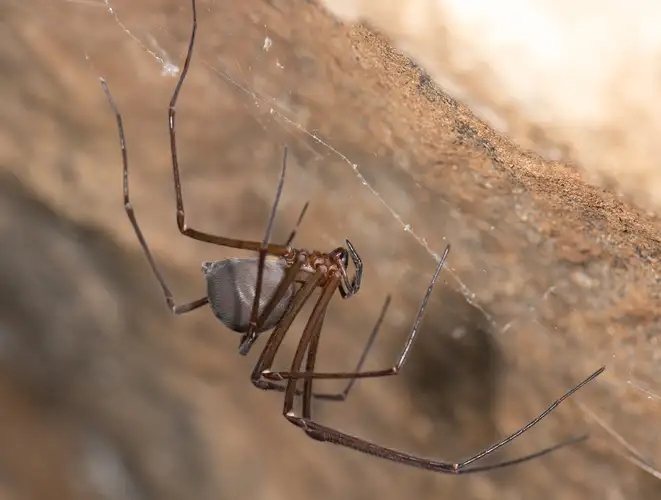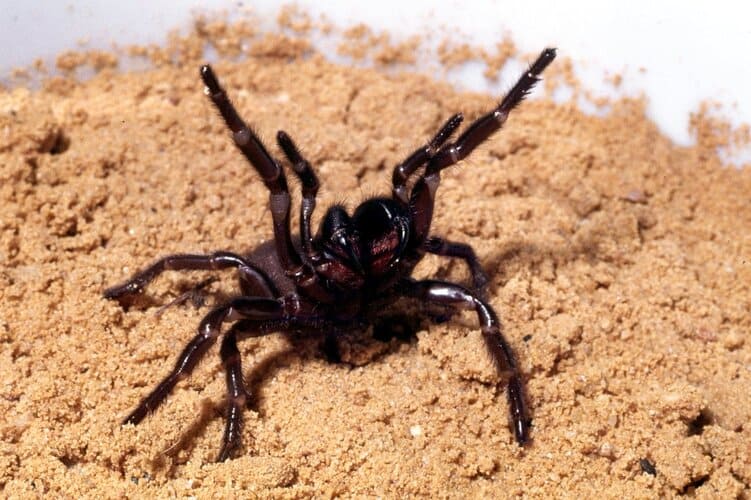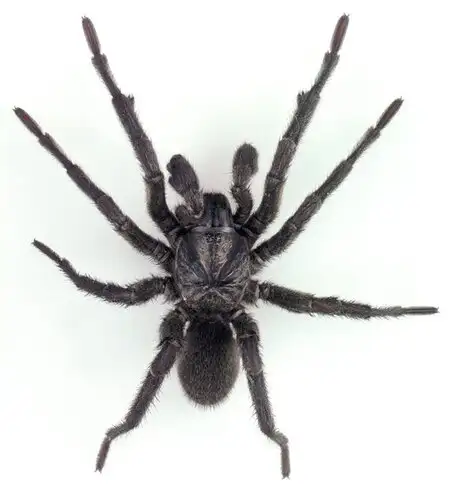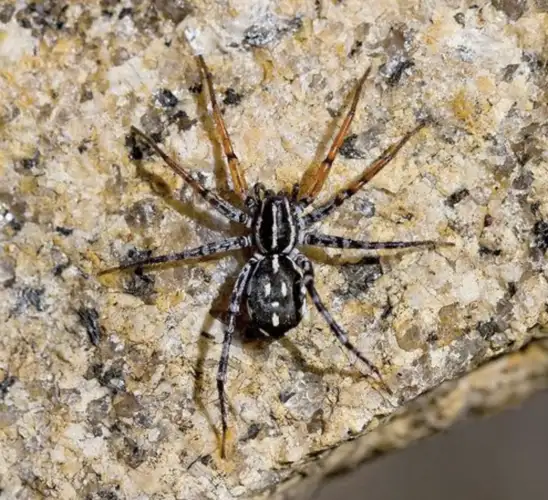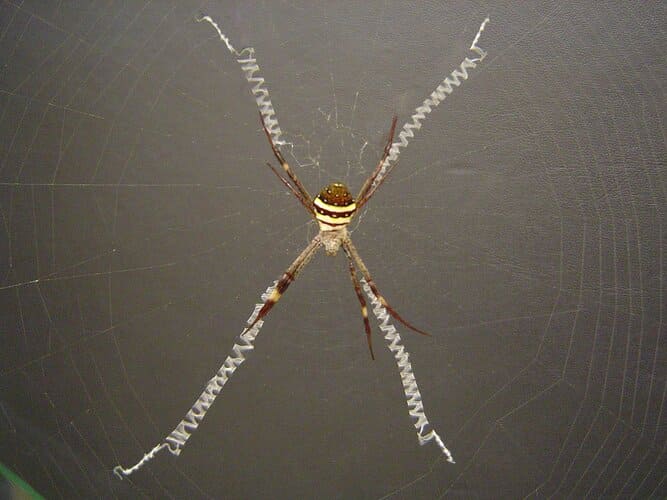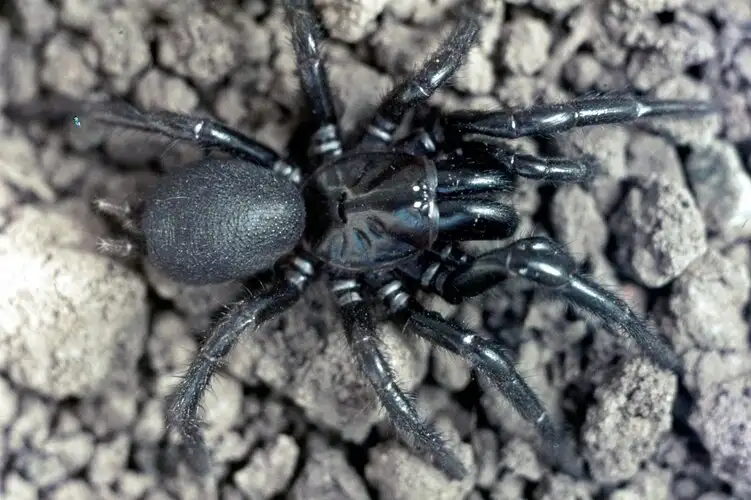Sydney Brown Trapdoor Spider
IUCN
LCBasic Information
Scientific classification
- name:Sydney Brown Trapdoor Spider
- Scientific Name:Arbanitis rapax (representative brown trapdoor spider from the Sydney region)
- Outline:Arthropoda
- Family:Idiopidae Arbanitis rapax
Vital signs
- length:Adults about 15 to 30 millimetres in body length, with females more robust and males more slender; leg span up to several centimetres
- Weight:Medium sized burrowing spider, generally within a few grams depending on sex and age
- lifetime:Females may occupy the same burrow for several years, so total life span can reach several years; males live for a shorter period after maturity
Feature
Burrow dwelling mygalomorph spider that constructs silk lined tunnels in soil sealed by a well camouflaged trapdoor and hunts at night from the entrance.
Distribution and Habitat
Woodland edges, shrubland, rocky slopes and suburban gardens with stable, well drained soils in the greater Sydney region of New South Wales, Australia.
Appearance
Brown to dark brown spider with a broad cephalothorax, strong fangs and short powerful legs; abdomen plain brown without bright markings, giving a solid and inconspicuous look.
Details
The Sydney Brown Trapdoor Spider is a medium sized, burrow dwelling mygalomorph from eastern Australia. The name is commonly applied to brown trapdoor spiders that live in and around the Sydney region, withArbanitis rapax often treated as a representative species. These spiders belong to the familyIdiopidae, a group that specialises in constructing silk lined burrows in soil that are sealed with camouflaged trapdoors.
Taxonomy and Naming
Common name: Sydney Brown Trapdoor Spider
Representative scientific name: Arbanitis rapax and related brown trapdoor spiders from the Sydney area
Family: Idiopidae
Genus: Arbanitis
Appearance
Sydney brown trapdoor spiders have a robust build and a subdued brown colour pattern that blends well with soil and leaf litter:
Body size: adults are usually about 15 to 30 millimetres in body length. Females are stocky and heavy bodied, males are more slender with longer legs. Leg span can reach several centimetres;
Colouration: the carapace and legs are brown to dark brown, sometimes with a slight reddish or blackish sheen. The abdomen is usually uniformly brown without bright markings;
Body form: the cephalothorax is broad and thick with strong chelicerae and large fangs. The legs are short, strong and well adapted for digging and pushing soil;
Surface texture: the carapace may appear smooth or finely haired, while the abdomen and legs are covered with short hairs that help sense vibrations;
Sexual dimorphism: mature males have developed palpal organs and wander in search of females, whereas females spend most of their lives inside a single burrow.
Distribution and Habitat
This spider group occurs mainly in eastern New South Wales, especially in the greater Sydney region and surrounding ranges and coastal areas. It can be found in natural bushland, parklands and suburban gardens.
Typical habitats include:
Edges of eucalypt woodland, shrubland and rocky slopes with suitable soil for burrows;
Garden beds, lawn edges and loose soil along fences and paths in suburban yards;
Soil beneath rocks, logs, tree roots and thick leaf litter;
Well drained slopes and embankments that are not frequently flooded.
They prefer stable, friable soils that can support deep burrows and allow the trapdoor to sit flush with the surface.
Burrows and Trapdoor Structure
The signature feature of the Sydney Brown Trapdoor Spider is its carefully built burrow with a hinged door:
The spider digs a vertical or slightly sloping tunnel that can extend many centimetres below ground;
The walls of the burrow are lined with silk, which strengthens the structure and reduces crumbling;
The entrance is covered by a thick lid made from soil, plant fragments and silk, forming a circular or oval door;
The edge of the door is attached to the tunnel wall with a silk hinge so that it can be pushed open and then pulled shut, sealing the spider inside and hiding the burrow from view.
The spider typically sits just inside the tunnel with its front legs touching the underside of the trapdoor, ready to detect vibrations from passing animals.
Behaviour and Diet
Sydney brown trapdoor spiders are nocturnal ambush predators that hunt from the safety of the burrow entrance:
During the day they remain hidden deep in the burrow with the door tightly closed to conserve moisture and avoid predators;
At night they wait near the door, sensing the movements of insects and other small animals outside;
Their prey includes beetles, cockroaches, other ground dwelling spiders, snails and occasionally small lizards;
When prey brushes against the silk around the entrance, the spider pushes open the door, lunges out, bites and drags the victim back inside.
Females may occupy the same burrow for several years, enlarging it as they grow. Males wander more widely once mature and are therefore more frequently encountered moving across the ground.
Reproduction and Life Cycle
The reproductive biology of brown trapdoor spiders follows the general pattern of many mygalomorphs:
Mature males leave their burrows during warm, humid periods and roam at night in search of female burrows;
When a male finds a suitable burrow he taps and vibrates at the entrance to signal his presence;
Mating usually takes place inside or near the burrow. Afterward the female constructs one or more silk egg sacs inside the tunnel;
Spiderlings remain in the maternal burrow for a time before dispersing to dig their own small starter burrows.
Venom and Medical Significance
Although these spiders are relatively large and have strong fangs, the Sydney Brown Trapdoor Spider isnot regarded as a medically significant species. Its venom is designed primarily for subduing arthropod prey.
Reported bites are uncommon and effects are usually limited to:
Local pain or tenderness at the bite site;
Mild redness and swelling that settles over time;
Occasional stronger discomfort in sensitive individuals.
Basic first aid such as washing the wound and applying a cold pack is usually adequate. Anyone who experiences persistent or severe symptoms should seek medical attention, but the level of risk is considered much lower than that posed by the famous Sydney funnel web spider.
Ecology and Relationship with Humans
In the ecosystems around Sydney, brown trapdoor spiders are important ground level predators that help control populations of insects and other invertebrates. Their burrows also provide microhabitats for other small organisms.
In gardens and parklands their presence is generally compatible with human activity. Where burrow doors appear near paths, they can often be left undisturbed or, if necessary, a section of soil containing the burrow can be carefully moved to a quieter corner of the garden rather than destroyed.
FAQ
Q1. Are Sydney Brown Trapdoor Spiders aggressive toward people?
They are shy spiders that spend most of their lives hidden in burrows. They usually retreat and close the door when disturbed
and bite only when handled or forced into close contact.
Q2. How can I recognise a trapdoor spider burrow?
The burrow is a round or oval hole in the soil with a thick, hinged lid that matches the surrounding surface.
The door can be gently lifted to reveal a silk lined tunnel beneath, although this should be done with care.
Q3. Do these spiders need to be removed from gardens?
In most cases removal is not necessary. They provide natural pest control and rarely interact directly with people.
If a burrow is located in a heavily used area, it can be relocated with a block of soil rather than destroyed.
Q4. How are brown trapdoor spiders different from funnel web spiders?
Both are mygalomorph spiders from eastern Australia, but trapdoor spiders build deep burrows with hinged doors and are not
regarded as highly dangerous. Funnel web spiders usually have open burrows or silk lined retreats and some species have
venom that can cause serious envenomation in humans.

